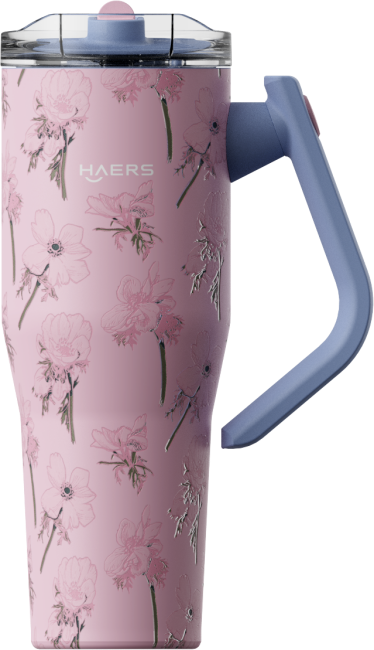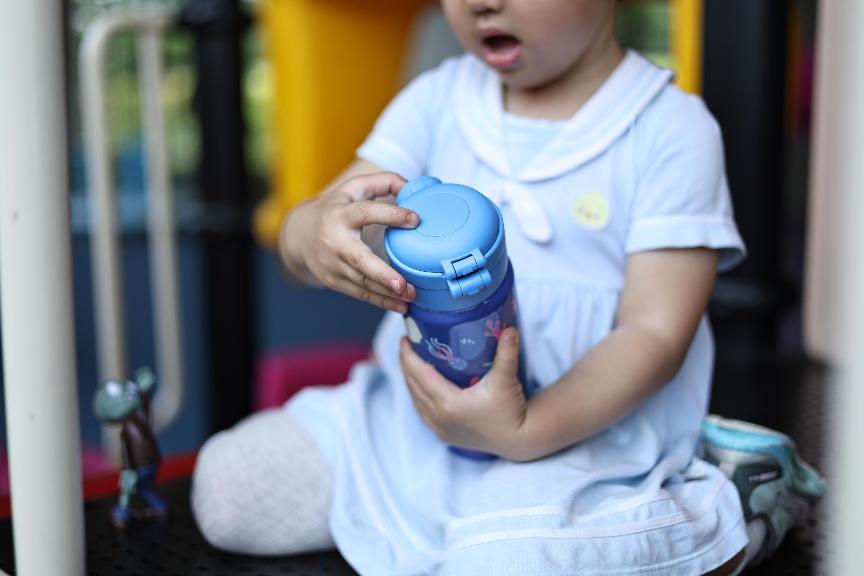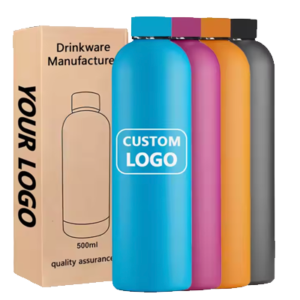How Are 3D Patterns Made on Stainless Steel Cups?
Have you ever run your fingers over a stainless steel cup and noticed that the logo or pattern feels raised — like it’s popping out of the surface? That textured, three-dimensional effect isn’t just for decoration. It’s the result of a high-tech process that’s becoming increasingly popular in drinkware manufacturing: 3D printing.
But how exactly are those 3D patterns created on cups? And what makes them different from traditional printing or engraving?
Let’s dive into the world of 3D printing technology on stainless steel cups.
Table of Contents
ToggleWhat Does 3D Printing Look Like on Cups?
3D printing technology, when applied to stainless steel cups, is a digitally driven surface decoration method that creates eye-catching, textured designs with real depth and dimension. Unlike traditional flat printing, 3D printing builds up ink in carefully controlled layers, using software-designed patterns and specialized inks with structural properties to form raised graphics on the cup’s surface.
At the core of this technology is its ability to break the limitations of 2D printing. It uses controlled pressure, temperature, and vacuum adsorption to ensure accurate ink placement and adhesion, creating an embossed-like finish that visually and physically “pops.”
This makes 3D printing especially valuable in the drinkware industry. As stainless steel cups are both functional items and lifestyle products, their appearance directly impacts consumer appeal and brand competitiveness. The shift from “flat decoration” to “3D artistry” is now made possible through this advanced process.

The result of 3D printing is more than just a pretty picture — it’s a tactile experience. Here’s what makes it stand out:
Relief-Like Texture: The ink is layered to form raised patterns you can actually feel. It creates a sculpted, embossed effect — similar to relief art or engraving.
What Are the Advantages of 3D Printing on Cups?
3D printing isn’t just a cool trend in cup decoration — it brings real technical and design advantages that traditional printing methods can’t match. From visual impact to manufacturing flexibility, here’s why more brands are turning to this innovative technique:
1. High-Precision 3D Texture Creation
By layering specially formulated ink and using micron-level precision, 3D printing goes beyond the limits of flat printing. The printer’s nozzles can control each ink droplet with incredible accuracy, and through a controlled curing process, the ink forms raised, sculpted textures on the cup’s surface.
The result? Patterns that not only look striking but also feel like miniature relief sculptures. Whether you’re aiming for fine gradients or bold depth, 3D printing brings out every detail with impressive clarity and touchable dimension — giving stainless steel cups a premium, artistic finish.
2. Digital Workflow, No Mold Needed
Thanks to its fully digital production process, 3D printing doesn’t require traditional molds or plates. Designs created on a computer can be directly translated into print instructions — no tooling or setup delays involved.
Need to tweak the color, size, or placement of a logo? No problem. With digital software, you can make real-time adjustments and instantly apply them to production. This “what you see is what you get” approach shortens lead times, reduces development costs, and supports flexible customization — perfect for limited editions, quick product launches, and personalized gifts.
3. Multi-Material Surface Compatibility
3D printing technology is compatible with a variety of materials including stainless steel, plastic, and titanium alloy. Specialized ink formulas and curing methods (such as high-temperature or UV curing) allow the ink to chemically bond with different substrates, creating a durable and seamless finish.
How Do Cup Manufacturers Use 3D Printing Technology?
In stainless steel cup manufacturing, 3D printing is mainly used in two ways: Logo printing and full-surface printing (for overall designs). Each serves different purposes and involves distinct technical focus.

1. 、Logo & Detail Printing
This method is ideal for brand logos, serial numbers, and small icons.
- Uses thin ink layers for precise detail
- Requires high nozzle accuracy to avoid blurring or broken lines
- Enhances brand recognition with clean, raised effects
- Popular among mid- to high-end brands for subtle branding
2. Full-Cup Surface Design
Used for custom gift cups, limited editions, and themed designs.
- Covers large areas with thicker, layered ink
- Focuses on depth, texture, and smooth adaptation to curves
- Suitable for full-wrap illustrations, event graphics, or kids’ cartoon cups
By choosing the right printing method and working with experienced manufacturers, brands can turn drinkware into a powerful tool for both branding and storytelling.
3D Printing vs. Screen Printing on Cups
While 3D printing offers a modern, textured approach to drinkware customization, it’s important to understand how it compares with one of the most widely used traditional methods in the industry — screen printing. Both techniques are commonly applied to cup decoration, but they differ significantly in finish, application scope, and overall effect, especially when it comes to logo printing and full-surface designs.
For logo applications, 3D printing provides a noticeable advantage in terms of texture and visual depth. Logos produced through 3D printing are raised from the surface, creating a tactile, embossed effect that immediately draws attention. This is particularly appealing for high-end branding, where the logo is expected not only to be seen but also felt — reinforcing identity through touch. In contrast, silk screen printing offers a flat finish. It works well for simple logos, especially those with solid colors and clear outlines, and is often chosen for cost-effective mass production. However, it lacks the dimensional quality and premium feel that 3D printing brings.
When applied to the full surface of the cup, the difference becomes even more apparent. 3D printing can handle complex patterns and gradient textures, adapting smoothly to curved or irregular surfaces without visible seams or distortion. The layered ink application adds depth, allowing light to interact with the design for a more dynamic appearance. This makes it ideal for custom gift cups, limited-edition designs, or any product where visual storytelling is part of the appeal. On the other hand, silk screen printing is better suited for basic, repetitive graphics. It performs well on flat or gently curved surfaces and can produce clean, consistent results with fewer setup requirements. However, its ability to deliver depth and texture is limited, and large-scale designs may require multiple passes and careful alignment.
For brands deciding between the two methods, the choice often comes down to design goals and budget. 3D printing is best for those seeking premium, tactile branding or highly customized visual effects. Silk screen printing, meanwhile, remains a practical solution for straightforward designs produced at scale. Understanding these differences helps buyers select the most suitable process for their specific product needs and market positioning.
How to Choose the Right Printing Method for Bulk Cup Order
After understanding the key differences between 3D printing and silk screen printing, the next question many buyers ask is: which method is right for my order? The answer depends on your project’s specific requirements — including order size, design complexity, material choice, and production timeline.
1. Order Size and Customization Needs
For custom bulk bottles with small quantities, 3D printing offers clear advantages. Since it doesn’t require molds or screens, it’s ideal for flexible production and short-run customization. If you’re producing fewer than 500 pieces — such as limited editions or promotional giveaways — 3D printing can help reduce setup costs and speed up delivery. In contrast, silk screen printing is more suitable for bulk wholesale cups where large quantities and standardized designs are needed. Once the screens are prepared, it enables fast, consistent output at lower per-unit costs, making it a reliable choice for mass production.
2. Design Complexity and Visual Requirements
Design complexity is another key factor. 3D printing excels when you want to showcase depth, layered textures, or dynamic light effects. It builds up ink layers that simulate embossed surfaces, perfect for adding tactile appeal to your cups. Silk screen printing, on the other hand, works best with simpler, flat graphics — like single-color logos or bold shapes — providing clear and efficient visual results for bulk custom bottles with classic designs.
3. Material Characteristics and Durability
Material choice also influences the method. 3D printing is ideal for hard, curved surfaces such as stainless steel or Tritan plastic. Its inks are cured with heat or UV light, ensuring durability and resistance to high temperatures and sterilization — key for reusable cups. Silk screen printing fits better on soft or flat materials and is often chosen for short-term use or promotional custom bulk orders where cost and speed matter more than longevity.
4. Cost Structure and Production Timeline
Finally, consider your budget and timeline. 3D printing supports rapid prototyping and flexible small runs without mold costs, perfect for brands testing new designs or launching limited series. Silk screen printing requires upfront screen preparation but delivers high efficiency and stable quality in ongoing production of custom bulk cups with established designs.
In summary, 3D printing offers creative flexibility and premium finishes ideal for customized, smaller batches, while silk screen printing provides cost-effective, scalable solutions for larger volume orders. Choosing the right printing method based on your order type will ensure optimal balance between cost, quality, and delivery.


